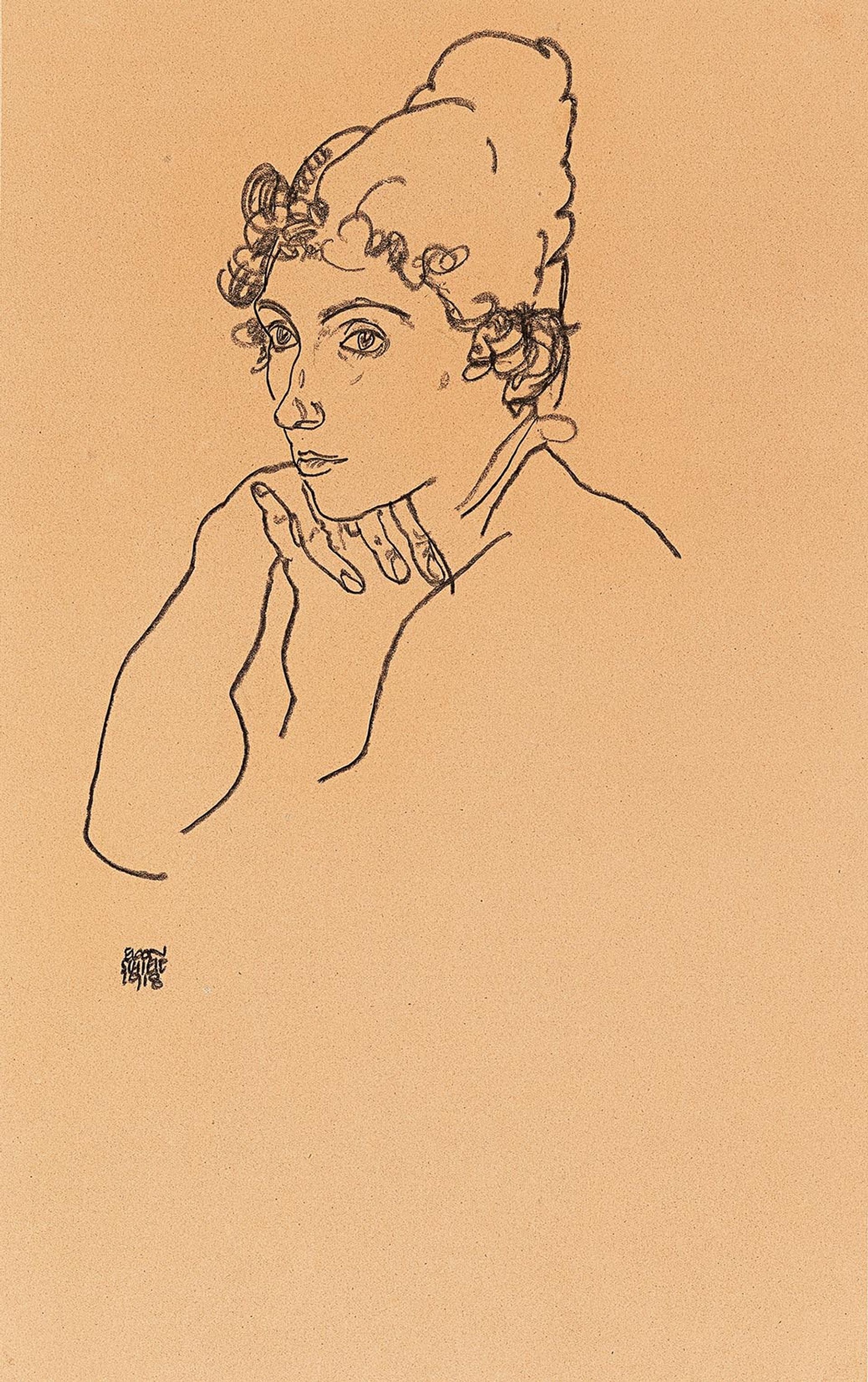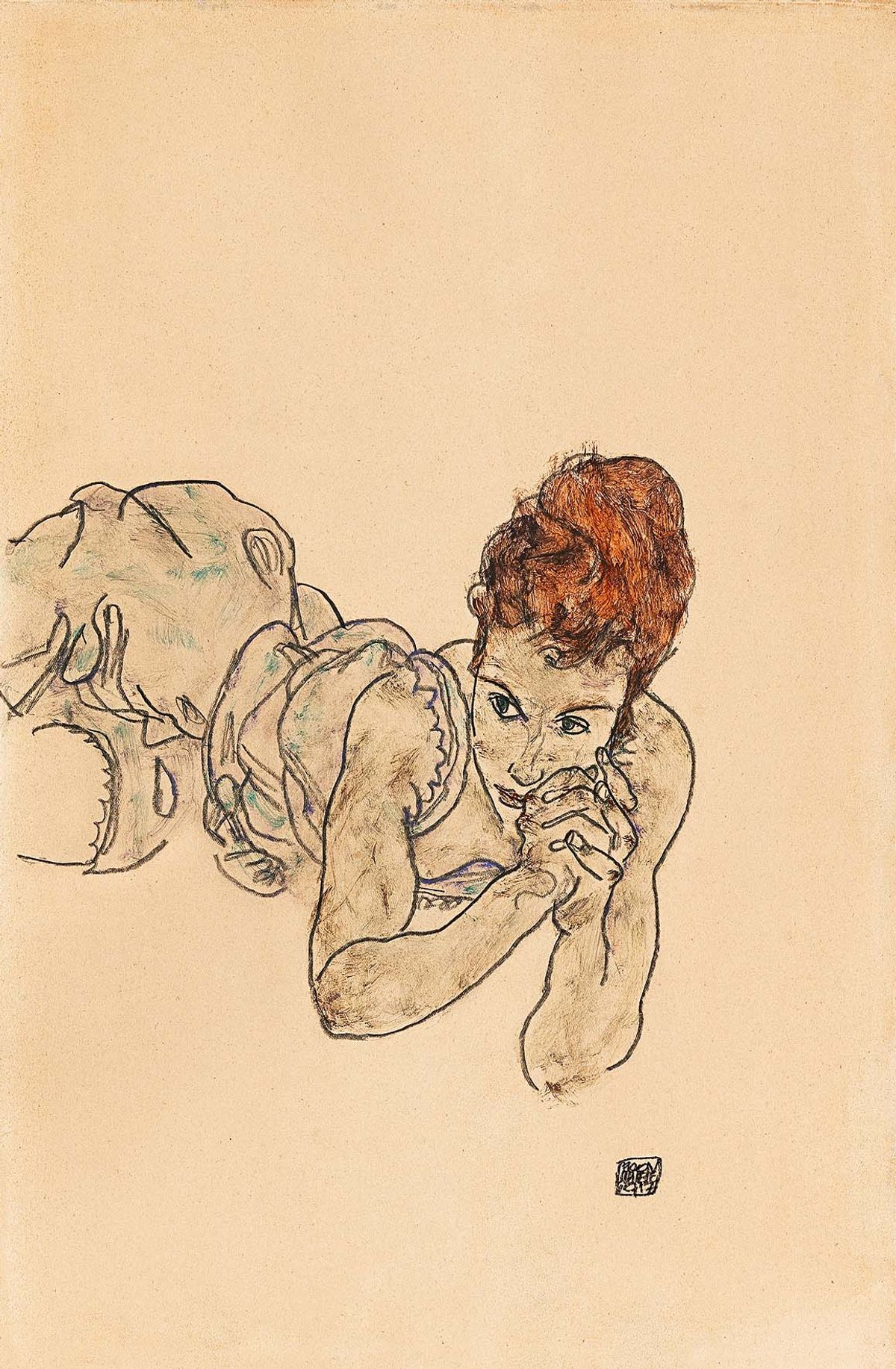Scholars and collectors keen on Egon Schiele will be watching closely how two drawings by the leading Austrian Expressionist fare at auction next week. Reclining Woman (1917; est €700,000-€1.2m) and Head of a Woman (1918; est €200,000-€300,000) go under the hammer at Dorotheum auction house in Vienna on 21 November. Both pieces have been in a private collection for the past 85 years.
So why do these works matter? “Major watercolours and drawings by Schiele have appeared less frequently on the market in the past decade than was formerly the case—a phenomenon common to all classic Modern artists,” says Jane Kallir, the co-director of Galerie St. Etienne in New York. Interest in Schiele’s market will only intensify next year with the upcoming centenary of his death on 28 October 2018.
Kallir’s essay for the Dorotheum sale catalogue discusses the identity of the sitter in Reclining Woman. She reveals that Edith Schiele, the artist’s wife, was determined to be Egon’s principal model, and became increasingly jealous of the naked women who posed in her husband’s studio.
But Edith had a rival, her sister Adele Harms. “[She] proved more than willing to pose,” Kallir writes. “Like Edith, Adele seems seldom to have stripped completely.” However, it is impossible to identify the subject. “Her facial features look somewhat like those of both Adele and Edith. She might be either sister, or neither,” she adds.

Dorotheum
The London-based art advisor Nazy Vassegh points out that although Schiele is best known for his erotic pictures and anguished self-portraits, his auction record was for one of his landscapes (Houses with Laundry (Suburb II) 1914), which sold for £24.7m at Sotheby’s London in 2011.
“The works being offered at the Dorotheum auction highlight his excellent use of line and contour, and show how much he adored women; they’re a far cry from his erotic paintings, and are tender. What’s more, they have been in private hands for 85 years, so they present an opportunity for a collector to acquire a fresh work from an astoundingly prolific artist with a brief career,” she says.
There is an important art historical aspect also. “Like all of Schiele’s illustrations of women, Reclining Woman is a deliberate staging of body and sexuality: the artist made eroticism the object of the picture and thereby elevated the erotic nude, which had been more of a study in previous art history, to an autonomous work of art,” argues Elke Königseder, specialist in Modern and contemporary art at Dorotheum.
UPDATE (22 November): At the Dorotheum sale of 21 November, Reclining Woman sold for €2.3m (with buyer's premium); Head of a Woman sold for €210,400 (with buyer's premium).


